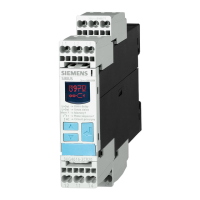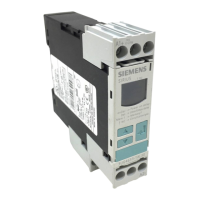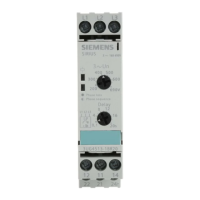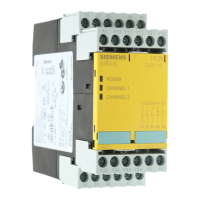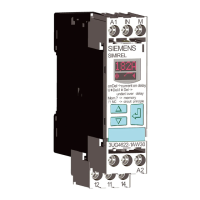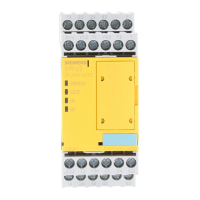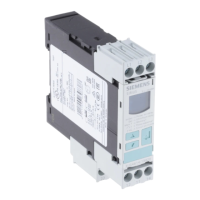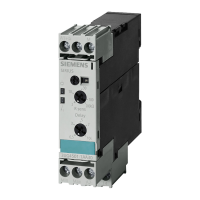3SK1 devices
5.1 3SK1 standard
3SK1 safety relays
46 Manual, 04/2013, A5E02526190021A/RS-AA/01
5.1.3.4 Terminal assignment
Terminal Explanation
A1 L+
A2 N-
IN1 Sensor channel 1
IN2 Sensor channel 2
IN3 Non-floating sensor evaluation
1)
INF/S Feedback circuit/START button
T1 Test output 1 (for IN1)
T2 Test output 2 (for IN2)
T3 Test output 3 (for IN3)
1)
T4 Test output 4 (for INF/S)
13 - 14
23 - 24
33 - 34
Enabling circuits (NO, relay contact)
41 - 42 Signaling circuits (NC, relay contact)
Floating: Sensors T1 / IN1 and T2 / IN2
jumper T3/IN3
Non-floating SensorsIN1 and IN3
1)
jumper T2/ IN2
1)
For 24 V AC/DC variant only
5.1.3.5 Inputs
The device has three or four inputs for safe signal processing: IN1, IN2 or IN3 (24 V floating
devices only), INF/S:
Inputs IN1 and IN2 can only be operated in two-channel mode with cross-circuit detection.
Single-channel activation is only possible via the supply voltage connection (A1). In this
case, circuits T1/IN1, T2/IN2 and T3/IN3 (24 V devices only) must be jumpered.
Sensor input INF/S is used to monitor a START button and/or external feedback circuits.
When a START button is implemented and external feedback circuits are monitored, the
floating contacts must be connected in series between T4 and INF/S.
Voltage variant 24 V:
Connecting floating sensors:
When floating sensors are used, for two-channel sensor connection, sensor inputs T1/IN1
and T2/IN2 must be used and T3/IN3 must additionally be jumpered.
Connecting non-floating sensors:
With non-floating sensors, cross-circuit detection must be deactivated.
This is implemented by the following pin assignment on the 3SK1111-.AB30:
IN1 and IN3 must be used as the input terminal for the two-channel non-floating sensor. In
addition, T2/IN2 must be jumpered.
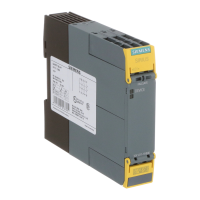
